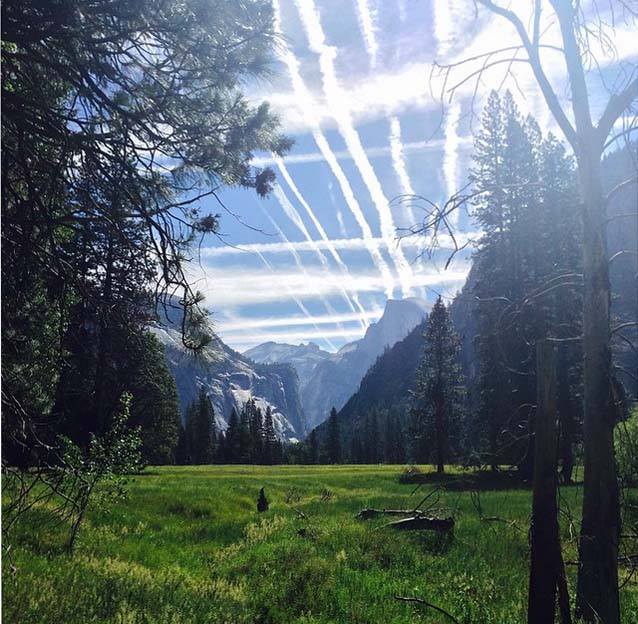As a huge chunk of the northern Pacific was covered in so-called “ship tracks” February 12, 2018, I showed how they did not follow major shipping lanes and were in fact proof of marine cloud brightening, a geoengineering “proposal” which has already been deployed.
Major shipping lanes are illustrated on the excellent ShipMap.org and if “ship tracks” were a normal byproduct of ship engine exhaust, they would blanket these lanes daily and be clearly visible on NASA Worldview. They are not – “ship tracks” are proof of marine cloud brightening operations, an often cited method of solar radiation management or geoengineering. Creating huge clouds of water droplets is simple technology – just research wet surface air coolers, for example.
Less than 24 hours after posting my YouTube video (which supposedly has 289 views as of February 17th), Discover Magazine went into damage control mode, publishing a weak rebuttal which failed to address why these supposed “ship tracks” aren’t found on major shipping lanes.
Discover’s Tom Yulsman wrote:
So, how do these ship tracks form, and why are they so very prominent?
It all starts with tiny particles — byproducts of combustion in the ships’ engines — that are spewed into the atmosphere. Each one of these aerosols is a tiny seed around which water vapor in the atmosphere can condense. That condensation creates cloud droplets. And as a ship moves, a trail of these cloud droplets is left behind.
Nowhere in his article did he mention why they aren’t covering major shipping lanes.
Marine Cloud Brightening is one of the several solar radiation management proposals publicly discussed for about a decade. It’s no secret – you can find it on Wikipedia.

Here’s an animation of the “ship tracks” (marine cloud brightening operations) over the Pacific February 13th, 2018, as seen by GOES-West.
2:50pm update: A NOAA-alum so-called “scientist” at @CIMSS_Satellite now claims that the fact that “ship tracks” are not found on heavily trafficked shipping routes is because the wind blew them away – presumably just to the northwest Pacific. Your tax dollars at work, people.



So-called “scientist”, eh? Wow, you really know how to hurt someone’s feelings. For a so-called “researcher”, you fail quite spectacularly when it comes to possessing even a rudimentary grasp of atmospheric science, specifically when it comes to understanding fundamental concepts such as the phase changes of water, boundary layer mixing, and the dynamics of plume dispersion. Your writings, while admittedly quite amusing to read, are utterly devoid of fact or scientific integrity. Keep up the great work though — and don’t stop begging for those donations (and hawking those oh-so-darling pins)!
Good to hear from you. So can you explain why shipping lanes are devoid of “ship tracks?” I’m all ears.